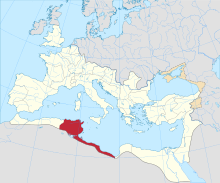
Byzacena was a Late Roman province in the central part of Roman North Africa, which is now roughly Tunisia, split off from Africa Proconsularis.

Vaison-la-Romaine is a town in the Vaucluse department in the Provence-Alpes-Côte d'Azur region in southeastern France.
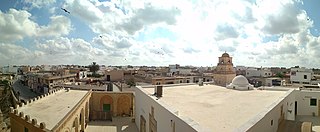
El Djem or El Jem is a town in Mahdia Governorate, Tunisia. Its population was 21,576 at the 2014 census. It is home to Roman remains, including the Amphitheatre of El Jem.
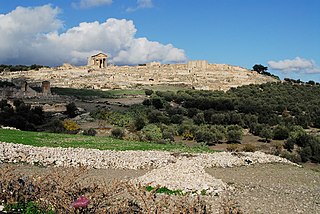
Dougga or Thugga or TBGG was a Berber, Punic and Roman settlement near present-day Téboursouk in northern Tunisia. The current archaeological site covers 65 hectares. UNESCO qualified Dougga as a World Heritage Site in 1997, believing that it represents "the best-preserved Roman small town in North Africa". The site, which lies in the middle of the countryside, has been protected from the encroachment of modern urbanization, in contrast, for example, to Carthage, which has been pillaged and rebuilt on numerous occasions. Dougga's size, its well-preserved monuments and its rich Numidian-Berber, Punic, ancient Roman, and Byzantine history make it exceptional. Amongst the most famous monuments at the site are a Libyco-Punic Mausoleum, the Capitol, the Roman theatre, and the temples of Saturn and of Juno Caelestis.

Maktar or Makthar, also known by other names during antiquity, is a town and archaeological site in Siliana Governorate, Tunisia.

A Roman circus was a large open-air venue used mainly for chariot races, although sometimes serving other purposes. It was similar to the ancient Greek hippodrome. Along with theatres and amphitheatres, circuses were one of the main entertainment venues at the time.

Mauretania Sitifensis was a Roman province in Northwest Africa. The capital was Setifis.

Alba-la-Romaine is a commune in the Ardèche department in the Auvergne-Rhône-Alpes region in Southern France.

The Arch of Alexander Severus is a Roman triumphal arch in the ancient civitas of Thugga, located in Dougga, Béja, Tunisia. It was dedicated to the Roman Emperor Alexander Severus.

The Punic-Libyan bilingual inscriptions are two important ancient bilingual inscriptions dated to the 2nd century BC.

The Libyco-Punic Mausoleum of Dougga is an ancient mausoleum located in Dougga, Tunisia. It is one of three examples of the royal architecture of Numidia, which is in a good state of preservation and dates to the second century BC. It was restored by the government of French Tunisia between 1908 and 1910.
Léon Homo was a 20th-century French historian, a specialist of Roman history.
The gens Menia was a minor Roman family. None of its members is known to have held any magistracies, but a few are known from inscriptions and mentions in ancient writers.
Henchir-Mâtria is an archaeological and prehistoric site in northern Tunisia. Henchir-Mâtria is at 36°31′23.4″N9°13′11.1″E, between Béja and Dougga and elevation of 407 metres. It is on the Oued el Beida River.
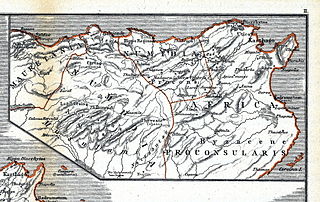
Numidia was a Roman province on the North African coast, comprising roughly the territory of north-east Algeria.

Sir Thomas Reade was a British Army officer during the Napoleonic Wars, known also as a collector.
The Diocese of Thucca Terenbenthina is an ancient Titular See of the Roman Catholic Church. The diocese is also known as Tucca Terebentina or دڨة, .
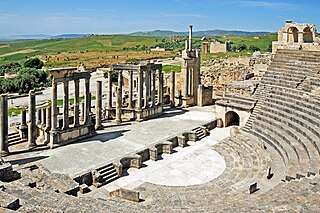
The Roman theatre of Dougga is an ancient theatre located in Teboursouk in the north-west of Tunisia.
The gens Steia was an obscure plebeian family at ancient Rome. No members of this gens are mentioned by ancient writers, but several are known from inscriptions, and at least some of them were of senatorial rank. A large number of the Steii settled in the provinces of Africa and Numidia.

The Libyco-Berber alphabet or the Libyc alphabet is an abjad writing system that was used during the first millennium BC by various Berber peoples of North Africa and the Canary Islands, to write ancient varieties of the Berber language like the Numidian language in ancient North Africa.
